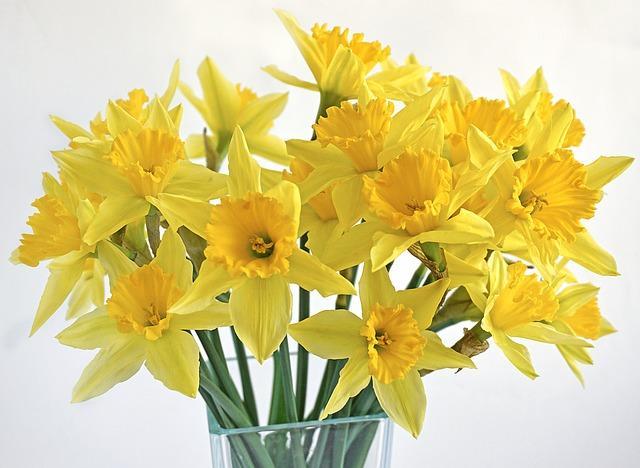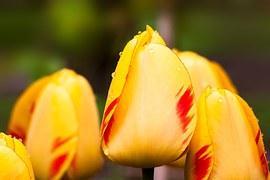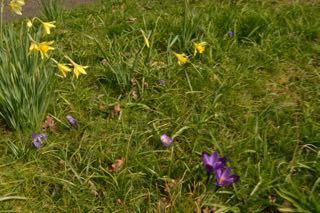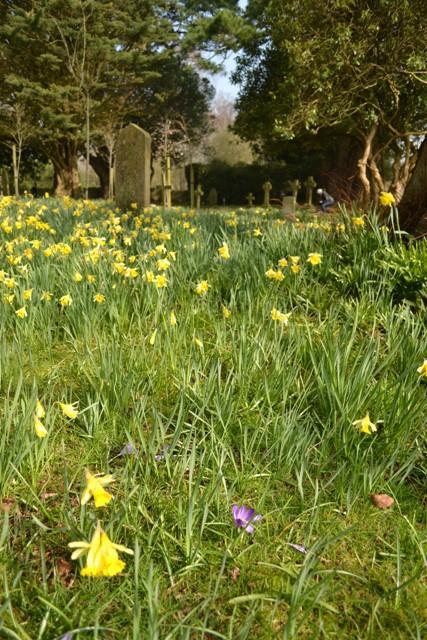Do you like the colour yellow in your garden?

Yellow in your garden for spring, by Debby Lockey garden designer
Often when I am talking to clients about which colours they would like in their garden I usually get a standard reaction to the colour yellow. ‘No yellow or orange please, I don’t like those colours’. But if I quiz them further I usually find that they do like yellow flowers in the spring, despite their apparent dislike of yellow. So why do we all like yellow so much in a spring garden?
The meaning of the word yellow.
Yellow comes from the Indo–European word ghelwo meaning related to gold. After winter, I think this golden brightness is why people actually like yellow in spring. It is a wonderful contrast to the grey days of winter and the brown of decaying leaves. Yellow seems like a splash of sunlight. Who hasn’t come across a group of yellow aconites, winter jasmine, or primroses and felt a smile forming? Yellow is the colour that your eye sees more readily than any other colour and subsequently your eye really does feel as if it has been bathed in gold.
Spring yellow
Another reason spring yellow is appreciated is it has a clearer, purer hue than the hotter yellows associated with autumn. On the colour wheel used by artists this clear yellow colour lies between the orange and harsher yellows on one side, and the yellowish greens to darker greens on the other side. Overall it is a calm colour.
All yellow planting scheme
Because of the high impact yellow has on our eyes, it is quite difficult to create an all yellow planting scheme. Lots of thought has to be given to the texture, shape and form of the plants so each can be distinguished by the eye; otherwise the result could seem like an amorphous mass. It is probably easier and more effective to use one type of yellow flower en masse. Think of the impression lots of daffodils planted in the grass had on Wordsworth. Here the contrast of the green grass set off the shape of the yellow trumpets of the daffodils.
The daffodils he saw were Pseudo narcissus, our native daffodils which spread if left alone to do their thing. They grow to between 9-12 inches tall and flower in March. As they tolerate some shade they can also be planted between the roots of trees, and along the base of walls and native hedges. But any daffodils can be used.
Yellow is also a great colour to use to add a sense of surprise to the garden. Plant them so that when you go around a corner they will metaphorically jump out at you. Or use them next to seats, pots or statues so your eye is drawn to that particular focal point.
The colour wheel
 I mentioned earlier the colour wheel used by artists. This is a wheel created by stretching the three primary colours, red, blue and yellow into a circle. Between these primary colours, are the secondary colours of orange, green and violet. The gradation of colours is then represented by subdividing the colours even further. The simplest way to use the colour wheel in relation to planting is to either use colours that are harmonious i.e. colours that are next to one another on the colour wheel and so share a pigment; alternatively, you can use colours that complement one another. These are colours that are opposite one another on the colour wheel and so don’t share a pigment.
I mentioned earlier the colour wheel used by artists. This is a wheel created by stretching the three primary colours, red, blue and yellow into a circle. Between these primary colours, are the secondary colours of orange, green and violet. The gradation of colours is then represented by subdividing the colours even further. The simplest way to use the colour wheel in relation to planting is to either use colours that are harmonious i.e. colours that are next to one another on the colour wheel and so share a pigment; alternatively, you can use colours that complement one another. These are colours that are opposite one another on the colour wheel and so don’t share a pigment.
Harmonious colour planting schemes using yellow
As yellow falls between orange and green on the colour wheel, a harmonious planting scheme would consist of a clear yellow spring flower with either plants of a darker yellow or orange with lime green plants. Such a combination could be achieved on the edge of a woodland area by planting golden yellow Crocus chrysanthus var. fuscotinctus in drifts in a sunny position. These flower from February to March. In the more shaded area plant soft yellow Primula vulgari; plants that have been in flower this year since the end of January, with Helleborus x hybridus Harvington double lime green, which, as the name suggests, has lime green flowers from February to April.
Complementary planting scheme
If you want a planting scheme that is more colourful choose colours that are opposite one another on the colour wheel. For soft yellow this is violet. A complementary planting scheme for a meadow setting could be Narcissus obvallaris planted with the purple flowering Fritillaria meleagris. and the blue flowering Camassia. A more woodland planting scheme could be Primula vulgaris with Brunnera macrophylla and purple flowering hellebores. While a bee friendly combination could be Mahonia x media ‘Charity’, with Primula vulgaris and the more shade tolerant Crocus tommasiniamus.
Whatever your planting combination, do enjoy planting yellow flowers for spring. They will provide that little splash of sunshine to contrast with those rather grey overcast days that are so typical of the start of spring in Britain.
If you'd like to talk about plans for your own garden with Debby, click the link below for contact details.


